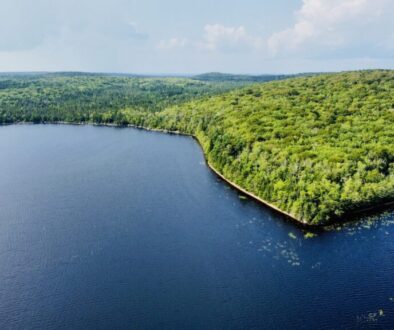CPAWS national report shows Nova Scotia making ‘reasonably good progress’ with protected areas
Published on Jul 13 2015
HALIFAX – In its latest annual report released in advance of Canada Parks Day, the Canadian Parks and Wilderness Society (CPAWS) is calling Canada out for falling behind most other countries in protecting its land and fresh water. CPAWS’ 2015 report, Protecting Canada: Is it in our nature? assesses whether our governments are on track to meet their collective international commitment to protect at least 17% of our land and fresh water by 2020, and to improve the quality of our protected areas.
“Based on our assessment of progress since Canada endorsed the UN Convention on Biological Diversity 10-year plan in 2010, it would take us 50 years from today, not five, to meet our commitment to protect at least 17% of our land and fresh water. And 17% is only the next step we need to take towards protecting at least half to ensure Canada continues to have healthy, functioning ecosystems,” says Alison Woodley, national director of CPAWS’ parks program.
Nova Scotia
Nova Scotia is making reasonably good progress creating new protected areas. In 2013, the province committed to protecting an additional quarter million hectares of land for conservation and the province has been taking steps to turn this plan into action. When the plan is fully implemented, about 14% of Nova Scotia’s landmass will be protected.
Over the past year, Nova Scotia has created 8 new protected wilderness areas, 26 new nature reserves, and expanded 9 existing protected areas. These designations were done in “batches”, with the first batch completed in December 2014 and the second batch finalized just last month.
In total, 32,766 hectares of land have been protected in Nova Scotia within the past year. That’s an area equivalent in size to just larger than half of Kejimkujik National Park. This represents 1/7th of the final protected areas plan now officially implemented, with more expected soon.
“Nova Scotia certainly has made good progress creating new protected areas in recent years,” says Chris Miller, National Conservation Biologist for CPAWS. “The province is on-track to greatly expand its system of protected areas later this year as subsequent batches of pending protected areas are finalized”.
Specific sites in Nova Scotia
Several of the standout new protected areas created in Nova Scotia over the past year include:
(1) Humes River Wilderness Area (3,625 hectares). This new protected area in Cape Breton contains extensive old-growth hardwood forest within one of the last intact watersheds near the Bras d’Or Lakes. It also contains important habitat for the endangered American marten and Canada lynx.
(2) Eastern Shore Islands Wilderness Area (1,853 hectares). The province officially protected hundreds of publicly-owned islands along the Eastern Shore, helping to conserve one of the last remaining wilderness archipelagos in Eastern North America. The islands contain important seabird colonies, important coastal ecosystems, and rich coastal boreal rainforest.
(3) Blue Mountain – Birch Cove Lakes Wilderness Area expansion (451 hectare expansion). This existing protected area near Halifax was expanded by 451 hectares in size, and now reaches all the way to Upper Tantallon. This spectacular near-urban wilderness jewel is now 23 times larger than Point Pleasant Park.
(4) Tusket River Wilderness Area (1,663 hectares). This new protected area in Yarmouth County protects some of the rarest plants in Canada, including the endangered pink coreopsis and Plymouth gentian, and over 20km of river and lake shoreline.
National findings
CPAWS found that the current percentage of lands and inland waters protected varies dramatically across Canada, ranging from just under three percent in Prince Edward Island, to more than 15% in British Columbia. Since 2011, the area protected in Alberta, Newfoundland and Labrador and the Yukon Territory has grown very little, or not at all, and all other provinces have only increased protection by less than 2%. B.C.’s progress is undermined by its 2014 Parks Act amendments that allow industrial research in parks and boundary changes to accommodate pipelines and logging.
“Some of Canada’s provinces and territories and Indigenous communities are making impressive efforts to advance protected areas. Quebec and Ontario have committed to protecting half of their northern territories, although implementation of these commitments is very slow. Nova Scotia has ramped up efforts and appears to be on track to reach 14% protection, Manitoba has committed to creating 15 new parks and protected areas and to expanding others, and Alberta, the Northwest Territories and Nunavut all have land use planning processes underway that could lead to new, large protected areas,” says Eric Hebert-Daly, CPAWS National Executive Director.
At the federal level, a large new national park called Qausuittuq in Nunavut (11,000 km2) was just finalized in June, and two more could be announced within the next year. These include an area called Thaidene Nene around the East Arm of Great Slave Lake, NWT, where approximately 30,000 km2 could become a combined national and territorial park shortly. Similarly, the process for finalizing the 10,700 km2 Mealy Mountains National Park Reserve in Labrador is nearing completion, with an adjacent 3,000 km2 provincial park still at the early stages of establishment.
Local Indigenous communities are playing a significant leadership role and partnering with federal, provincial, and/or territorial governments to protect many of these large areas.
CPAWS calculates that if existing plans for creating new protected areas were implemented, along with other commitments for which specific sites have not yet been confirmed, Canada could meet its obligation to reach 17% protection by 2020.
Map of Nova Scotia’s existing and pending protected areas here.
Contact
Chris Miller, Ph.D.
National Conservation Biologist
cmiller@cpaws.org
twitter: @NSwilderness


